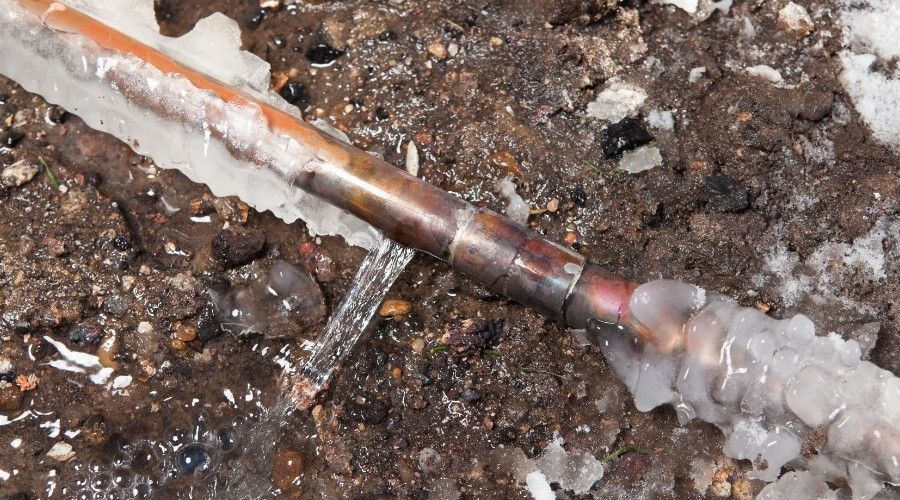How to Prevent Frozen Pipes This Winter
When temperatures plunge, plumbing systems face added stress that can lead to frozen pipes, leaks, and costly water damage. A single pipe burst can create flooding, ruin flooring and drywall, and interrupt normal routines for days. With a bit of preparation before the coldest weather arrives, homeowners can significantly lower the risk of freezing pipes and related disasters. This post explains practical steps to protect plumbing during winter, including how to insulate pipes in vulnerable areas, use indoor heat wisely, and properly winterize each outdoor faucet to prevent ice from forming in the lines.
Insulate the Pipes
 One of the most effective defenses against frozen pipes is proper pipe insulation. Pipes that run through unconditioned or poorly insulated areas are particularly vulnerable, such as those in attics, crawl spaces, unfinished basements, and garages. In these spaces, temperatures can drop quickly, allowing water inside the pipes to freeze and expand, which increases the likelihood of a pipe burst.
One of the most effective defenses against frozen pipes is proper pipe insulation. Pipes that run through unconditioned or poorly insulated areas are particularly vulnerable, such as those in attics, crawl spaces, unfinished basements, and garages. In these spaces, temperatures can drop quickly, allowing water inside the pipes to freeze and expand, which increases the likelihood of a pipe burst.
Adding pipe insulation to exposed lines helps keep the water temperature more stable and shields the pipes from frigid air. Foam pipe insulation sleeves are commonly used because they are affordable, easy to install, and available in different diameters to fit most pipe sizes. Focusing on sections near exterior walls, drafty windows, overhead doors, and vents can make a significant difference.
Taking the time to insulate pipes before a cold snap hits offers long-term protection. Even a modest investment in pipe insulation is far less expensive than repairs and cleanup after a burst pipe event. Combined with other winterization measures, insulated pipes form the first line of defense against freezing pipes and the damage they cause.
Keep the Heat on and Open Cabinets
 Indoor heating also plays a crucial role in preventing frozen pipes. Maintaining a consistent temperature throughout the home during cold weather helps keep interior plumbing safely above freezing. Instead of allowing the thermostat to swing dramatically between day and night, many experts recommend a steady, moderate setting whenever outdoor temperatures drop near or below freezing. This practice reduces stress on the system and helps prevent cold pockets from forming in out-of-the-way areas.
Indoor heating also plays a crucial role in preventing frozen pipes. Maintaining a consistent temperature throughout the home during cold weather helps keep interior plumbing safely above freezing. Instead of allowing the thermostat to swing dramatically between day and night, many experts recommend a steady, moderate setting whenever outdoor temperatures drop near or below freezing. This practice reduces stress on the system and helps prevent cold pockets from forming in out-of-the-way areas.
Cabinets and doors can create hidden cold zones around plumbing if left closed. Under-sink cabinets in kitchens and bathrooms, for example, often conceal supply lines located on exterior walls. When outside temperatures fall, these small, enclosed spaces can become much colder than the surrounding rooms. Leaving cabinet doors open during extended cold spells allows warm air from the living spaces to circulate around the pipes, helping reduce the risk of frozen pipes and potential pipe burst damage.
In homes that may be unoccupied for short periods during winter travel, keeping the heat on at a lower but safe setting can also help protect the plumbing. Combining consistent indoor heating with strategic efforts to open cabinets and interior doors ensures that warm air reaches vulnerable plumbing in every corner of the house.
Winterize Outdoor Faucets
Outdoor plumbing is often the first place freezing occurs, making it essential to winterize each outdoor faucet before cold weather sets in. Water left in exterior lines and hoses can freeze, expand, and cause damage that may extend into the interior of the home. Properly preparing these fixtures can greatly reduce the risk of freezing pipes in exterior walls and connected plumbing.
The process begins with disconnecting hoses from every outdoor faucet. Any water trapped inside a hose can freeze and create pressure on both the hose and the faucet. After removing the hose, it should be drained completely and stored in a sheltered area for the winter. The next step is to locate and shut off the interior valve that supplies water to the outdoor faucet, if one is available.
Once the water supply is turned off, the outdoor faucet should be opened to allow any remaining water in the pipe to drain out. This step relieves pressure and helps ensure that minimal water is left to freeze inside the line. Finally, covering the outdoor faucet with an insulated cover or similar protective device adds an extra barrier against wind and cold air. This simple combination of draining, shutting off, and insulating can dramatically lower the risk of freeze-related damage and keep the plumbing system safer all winter long.
About Maxwell-White Plumbing
Maxwell-White Plumbing is a trusted plumbing company prioritizing customer satisfaction in West Salem and beyond. They offer fast and thorough solutions and quality workmanship for all your plumbing needs. Call them today to schedule burst pipe repair in West Salem, WI.



